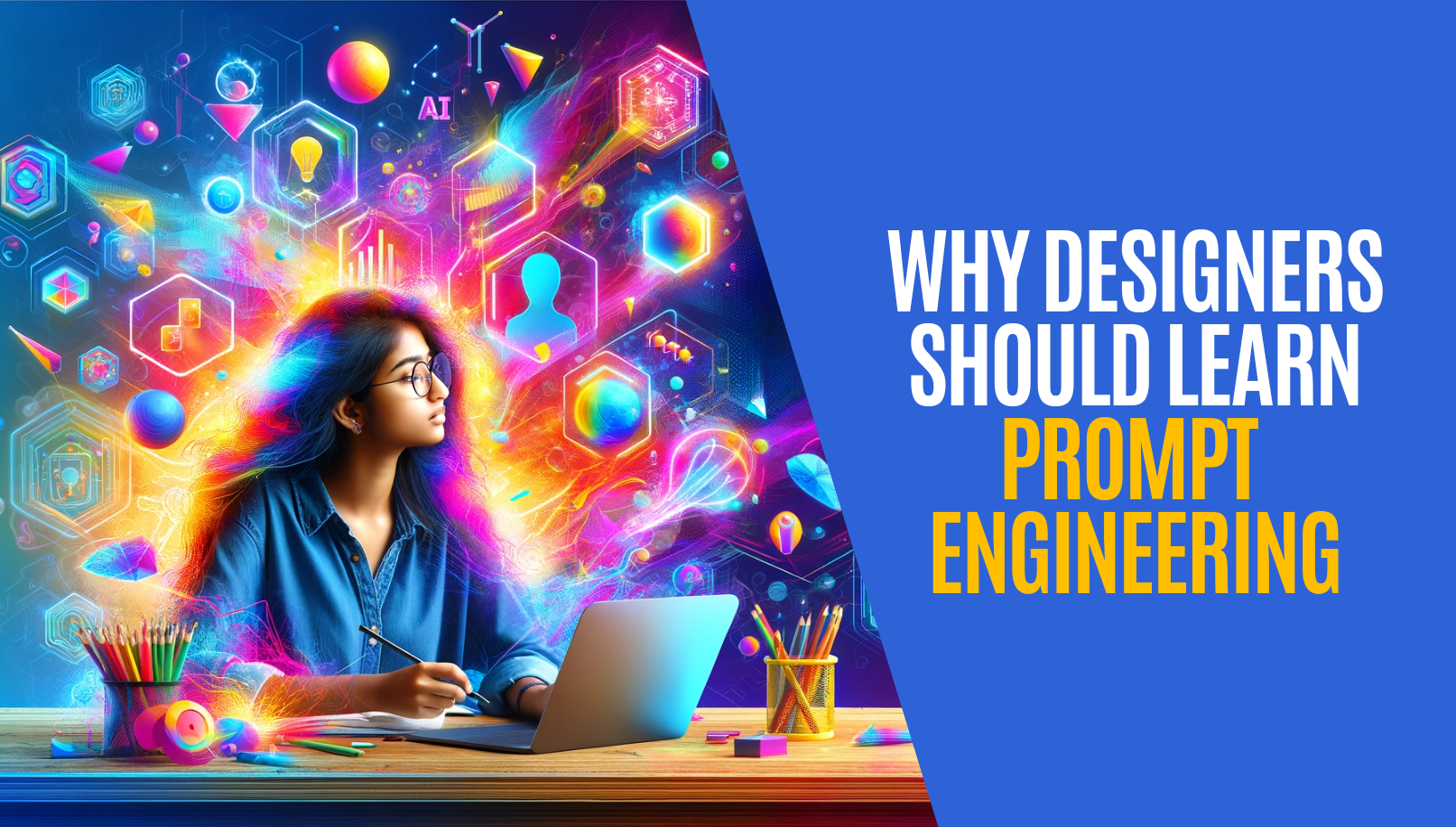In the ever-changing field of UI/UX design, Artificial Intelligence (AI) is transforming how designers approach their work. This shift sees AI not only as a tool but as a collaborative partner, reshaping design processes with intelligence and adaptability. As AI's role in design expands, a crucial skill emerges — prompt engineering.

The Ultimate Guide for UX Designers
The only ebook you'll ever need to master AI for UX design.
Get 30% Off TodayWhat is Prompt Engineering?
Prompt engineering is an "accidental" offspring of Artificial intelligence. It is an emerging discipline that sits at the intersection of artificial intelligence and user-centric design.
It involves strategically creating prompts — directions or questions — to guide AI models like ChatGPT in generating specific, relevant outputs. This skill is akin to speaking the language of AI, a nuanced form of communication that combines clarity, context, and creativity.
In essence, prompt engineering is about asking AI for information effectively. It's about knowing not only what to ask but how to ask it. The goal is to interact with AI in a way that harnesses its computational power to produce outputs aligned with user intentions and project objectives.
Prompt engineering is critical in bridging the gap between human creativity and machine processing, ensuring AI tools function as intelligent collaborators in the design process rather than mere responders to queries.

Addressing AI's Limitations and Leveraging Its Strengths
In design, AI excels when you know the desired output and can convey it effectively. AI serves as a means to achieve excellent design options such as layouts or color schemes, informed by predefined parameters. However, without prompt engineering skills, you may struggle to recognize misinformation or poor designs generated by AI.
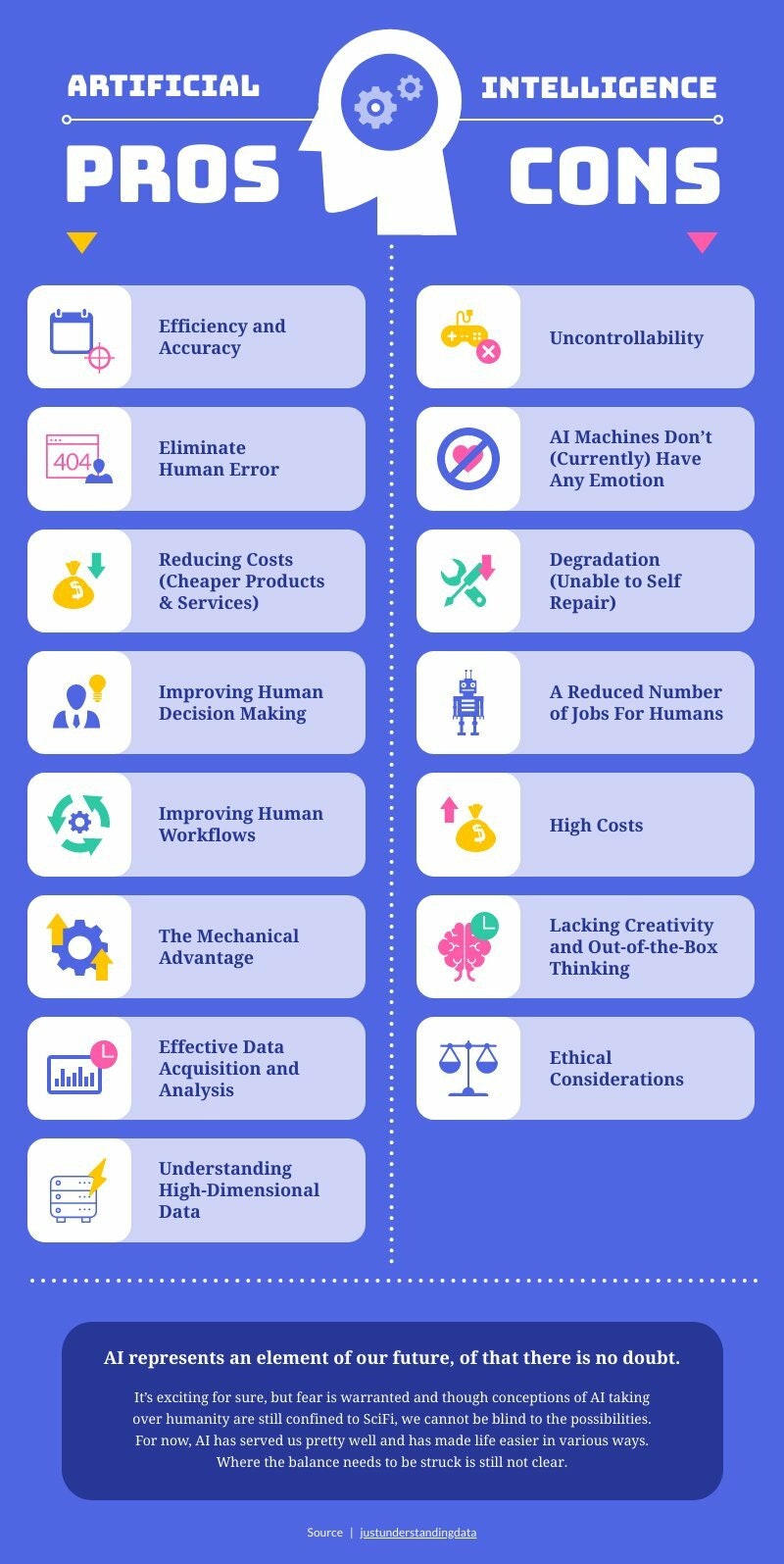
Prompt engineering involves striking a balance between your skills and AI’s input. It's not just about extracting the most from AI but using it to enhance human creativity and intuition. Recognizing AI's limitations, such as its lack of deep creative understanding, is essential.
By using AI as a tool rather than a replacement, designers can improve efficiency and expand design possibilities, ensuring AI complements the human element in exceptional design.
Crafting Effective Prompts
In AI-assisted design, mastering the creation of effective prompts is crucial. This skill, often underestimated, is much like a dance that blends experimentation and efficiency. So, what's the secret to crafting an effective prompt?
The key lies in knowing precisely what you want from AI and articulating it with precision. Just as a skilled painter knows every brushstroke, a designer proficient in prompt engineering understands the power of each word in directing AI.
Experimentation is essential. Every prompt is a test, an exploration of AI's capabilities. Understanding its nuances comes from trial and error, pushing boundaries to see how far AI can interpret and execute creative directives.
Fine-tuning your requests is vital. Instead of tossing words into the digital ether and hoping for the best, seek accuracy through experimentation with various prompts until you reach efficiency.
Balancing Context in Prompts
The effectiveness of a prompt often depends on context. Too little context may lead AI to hallucinate or ramble, unable to grasp your vision, while too much can confuse it, resulting in off-target results. Achieving the right balance is essential, much like walking a tightrope.
Provide just enough context to guide AI without overwhelming it. This approach ensures that AI remains a reliable ally in the creative process, avoiding unhelpful or irrelevant responses.
Enhancing Context with PDFs
Modern tools like the AskYourPDF plugin aid in maintaining this balance. By attaching PDFs, designers offer AI extensive background information, research, or design specifications. This enables AI to provide informed, relevant output by parsing through detailed content.
Prompt engineering is an art form that requires clarity, context, and creativity. It's about guiding AI thoughtfully, ensuring each prompt advances innovative, AI-assisted design solutions.

Advancing Design with Visual Prompts
Incorporating Images into AI Prompts
In AI-driven design, incorporating visual elements into prompts unlocks new possibilities. With technologies like ChatGPT interpreting image-based prompts, designers can transcend textual limitations, using images for richer context. This advancement enhances AI communication, allowing designers to express ideas more vividly.
Effective use of this feature involves viewing visuals as part of a broader narrative. Each image should serve a clear purpose, whether for inspiration or as a reference point for design elements. For instance, an image of a serene landscape can guide AI in creating designs that convey tranquility.
Balancing visual and textual components in prompts is crucial. The image should enrich, not dominate, the prompt, ensuring AI comprehends both the visual clue and its intended impact on the design. This optimizes AI's capacity for visual interpretation, resulting in more nuanced and relevant design outputs.
Heuristic Evaluation and UI Design
Heuristic evaluation in UI design involves identifying usability issues. Combining this with AI prompts, such as instructing AI to conduct a heuristic evaluation of a user interface with an image, enhances design efficiency. AI can apply heuristic principles like consistency and user control to offer insightful feedback and suggestions, allowing for targeted analysis. This approach provides designers with AI-generated insights that complement their expertise, uncovering overlooked design elements.
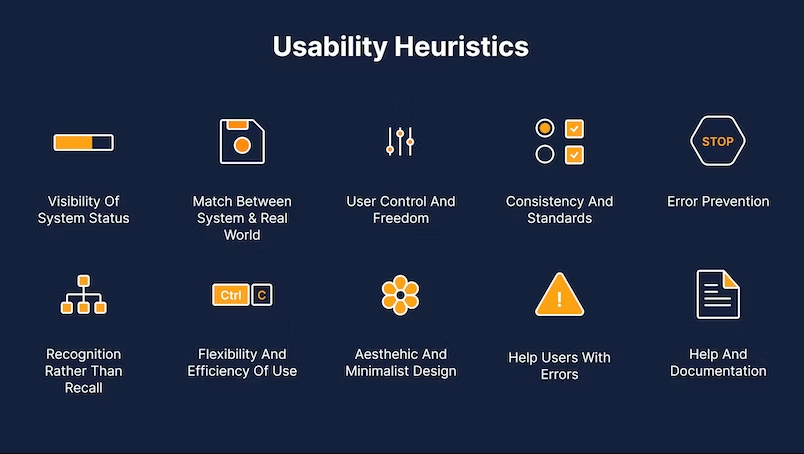
Example of UI Evaluation Prompt
Prompt Example 1:
"Conduct a comprehensive usability evaluation of the provided user interface [Insert UI Image/Link]. Focus on the user flow from the home page to checkout for a new user. Identify key areas of friction and suggest improvements. Assess the interface for ease of navigation, clarity of information, and intuitiveness of the checkout process. Compare it against established usability standards like Nielsen’s Heuristics. Provide a bullet-point list of potential issues and actionable recommendations for each identified problem area.”
Explanation:
This prompt guides AI in a thorough usability analysis, emphasizing the user journey from the home page to checkout. It instructs AI to identify friction points, compare the interface with Nielsen’s Heuristics, and offer organized, actionable feedback, targeting essential user interactions.
Prompt Example 2:
"Perform an accessibility audit on the following user interface [Insert UI Image/Link], with a focus on inclusivity for users with disabilities. Evaluate the interface against WCAG (Web Content Accessibility Guidelines) criteria, particularly for color contrast, text readability, screen reader compatibility, and keyboard navigability. Highlight any areas that fail to meet these standards and provide specific suggestions for improvement. Additionally, assess the overall inclusivity of the design, considering factors such as language simplicity, cultural neutrality, and representation in imagery.”
Explanation:
This prompt instructs AI to conduct an accessibility audit based on WCAG criteria, covering aspects like color contrast, text readability, and inclusivity in design. It also asks for an assessment of cultural neutrality, representation, and overall inclusivity, offering a holistic view of accessibility.
Streamlining Design Workflows with Saved Prompts
The Efficiency of Reusing Prompts
In AI-assisted design, prompt engineering goes beyond effective communication; it optimizes workflow efficiency and consistency. However, many AI platforms lack native prompt-saving features, leading to repetitive inefficiencies. Browser extensions like “Prompt Snippet” provide a practical solution.
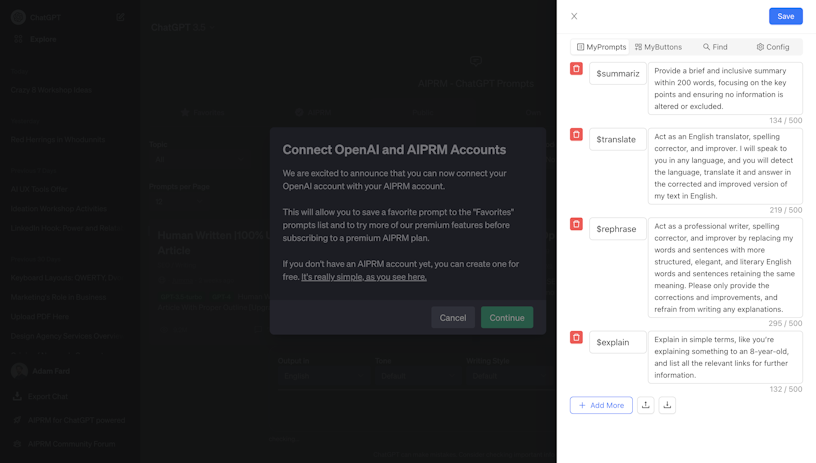
These tools enable designers to store, retrieve, and reuse well-crafted prompts, saving time and ensuring consistent AI interactions across projects. For example, designers can save a specific prompt for generating color palettes, guaranteeing consistent AI-generated results.
The ability to save and reuse prompts streamlines the design process, enhancing the creative workflow. Designers can create a personalized library of prompts that reflect their expertise and preferred AI interaction patterns.
Prompt-saving tools introduce efficiency and standardization in AI-assisted design, allowing designers to focus on creativity with a curated set of prompts for routine AI interactions.
AI's Role in Ethical Design and the Future
As AI becomes indispensable in design, ethical considerations grow more critical. The use of AI raises questions about user privacy, data security, and ethical implications of AI-generated designs. Designers must ensure AI aligns with ethical standards and user rights.
Ethical design goes beyond legal compliance and privacy respect. It involves creating designs that are accessible, inclusive, and respectful of users' privacy. AI-driven design tools can sometimes create stereotypes or reinforce biases. Designers must identify and mitigate these issues by training AI models on diverse data sources to eliminate biases and ensure cultural sensitivity.
Transparency is another element of ethics in AI for design. Users should be informed about how AI is used in the design process and how their data is handled. This builds trust and a sense of security, addressing rising concerns about data privacy.
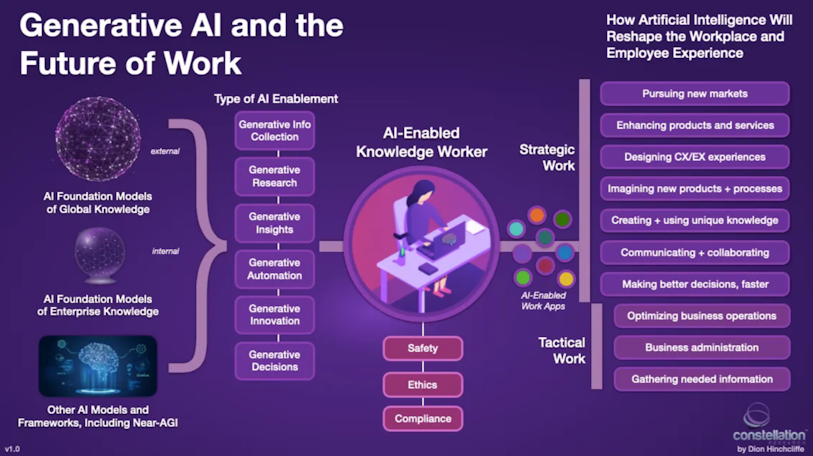
The Future of AI and Prompt Engineering in Design
Looking ahead, prompt engineering's importance in design will grow significantly as AI technology advances. Future designers will not only utilize AI for functional tasks but also supervise AI tools in the complex creative process.
In the future, AI and design may create highly personalized user experiences that align with individual preferences. AI's expansion into areas like virtual reality and augmented reality will likely play a vital role in creating immersive experiences.
Moreover, the emergence of new roles and specializations centered around AI or machine learning in design is likely. These roles will focus on the effective, ethical, responsible, and creative use of AI in design.

Conclusion: Embracing the Future
In the ever-evolving worlds of design and technology, the rise of AI underscores the importance of prompt engineering. This skill is crucial for forward-thinking designers, serving as a bridge that connects human creativity with AI's computational power. It leads to a more imaginative and streamlined design process, empowering designers to align their artistic vision with limitless possibilities and fostering innovation.
Prompt engineering signifies a broader transformation in design, shifting toward intelligent collaboration and data-driven approaches. It equips designers with essential skills for the AI-driven future, positioning them as pioneers in user-centric design. This era promises highly personalized and agile designs, with rapid engineering as a key component.
As we enter the age of AI-driven innovation, using prompt engineering isn't just about adapting; it's about propelling design forward. Designers who master this skill will lead the way, shaping the future of design where AI plays a central role. This is a pivotal moment for designers to thrive in a technology-driven world.


